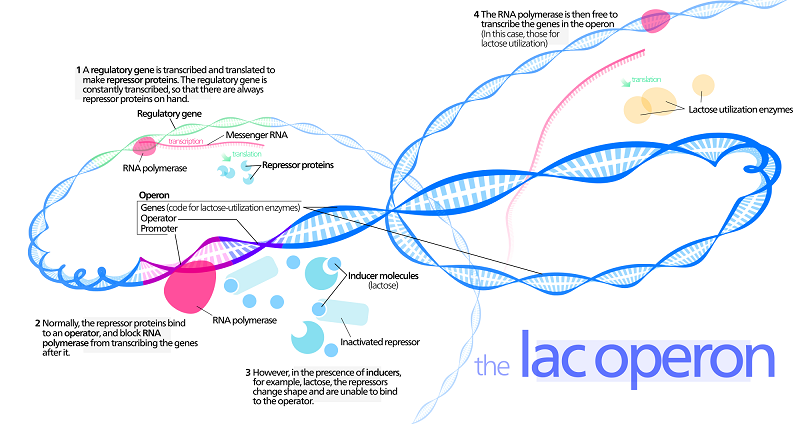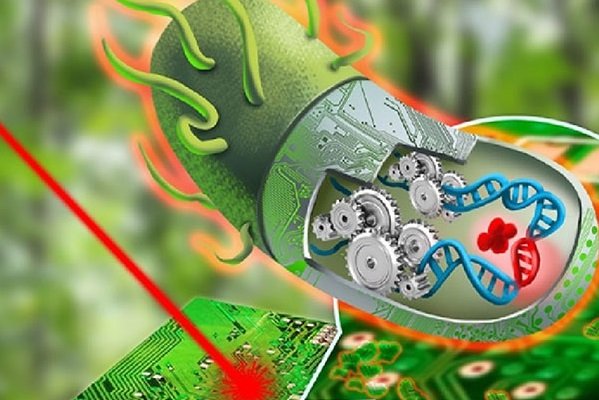How Can We Turn Slime Into Nano Factories? The Fascinating Field Of Synthetic Biology!
We all experienced the cold during our lives. An unpleasant experience is the coughing up of slime. This slime contains bacteria that can infect others. Thus great efforts are being made to find ways to get rid of so called biofilms. However, there is a countermovement that is attempting to use biofilms. Today I want to introduce you to the fabulous world of synthetic biology, a new research field that aims to use bacteria and biofilms as molecular factories.
What Is a Biofilm?
Biofilms are comprised of microorganisms like bacteria. Such organisms can attach to a surface and form a film by producing a network of fibers that extend from the cell´s outer membrane (or cell wall in the case of bacteria) into the space in between adjacent cells. Those fibers help to establish the biofilm by linking together cells. Biofilms enable optimal exchange of genes and other materials. Most of the time biofilms are related to infections and disease (1), but recent research has found that biofilms may be useful for the biotech industry. Synthetic biology is a relatively new research field that is attempting to harness the cell´s potential as a factory for nanomaterials (2).
What Is Synthetic Biology?
The cell is a complex building blog of an organism (or even an organism itself, in the case of bacteria). It carries out many processes, such as energy production, protein production, replication, just to name a few. The products produced are very diverse in structure and function. For example, some cells contain metals as their catalytic sites, whereas others can form structures that bind and carry certain nutrients in their inside. This complex machinery is governed by genes and their expression. Research has found very precise methods that enable us to edit the genetic code of cells (such as CRISPR). With these technologies, we can alter the genetic code of bacteria, and thus build in new genes for certain products. We can even introduce and on/off switch for genes in cells (3).
A common mechanism in controlling gene transcription in engineered cells is through the lac operon. The lac operon is only turned on under certain conditions, and thus allows researchers to induce transcription of an inserted gene whenever they want to (I have used this myself in one of my earlier research projects).
Synthetic biology attempts to design cells that can produce certain products.
We had a presenter from North Carolina State University who works in synthetic biology at my university. He stated that one day, researchers may be able to design totally new proteins and other products that have unique characteristics and unparalleled possibilities.
What Are Some Current Findings?
This post was inspired by an article I just read, published in the MIT News magazine. Here the authors reported that researchers found a way to design a biofilm that consists of E.Choli. In such biofilms, E.Choli bacteria form fibers extruding away from the cell. These fibers are called “curli fibers”. These fibers can contain proteins which are able to bind metals. By modifying E.Choli to produce curli fibers that contain proteins capable of binding metals, the researchers were able to form a conductive biofilm, when the bacteria were supplied with needed nutrients and viable metal solutions.
Another team of researchers is working on finding a way to print 3D structures using 3D printers and biofilms (4). This would help to build functional nano structures in a relatively quick and cost-effective manner.
Another very interesting project is to use viruses to produce batteries by changing the composition of the coat of the virus (5).
A very useful characteristic of biofilms is that they are responding and adapting to changes in their environment. This allows for a wide range of possible applications such as self-healing, or response of a material to a change in temperature, pH or just to light exposure (5). It is even possible to use two bacterial cultures, that have been modified in different ways, and let them form a biofilm together. This for of co-cultivation allows for even more specialized applications, in which the one culture supplies the materials for the other culture to form products that then can be yielded (6).
My Opinion
Personally, this was the field I originally wanted to get into when I first considered becoming a scientist. It is an interesting field that links to many other fields in science like chemistry, biology, physics, engineering, material science and the upcoming nano-science. With synthetic biology we may be able to find or create new materials that can replace other desirable materials that are too expensive or difficult to make (like carbon nano tubes). It also may be applicable in green chemistry, as we may be able to engineer algae or other aquatic biofilms that maybe able to bind certain chemicals (such as metals, dissolved nitrogen, etc). This is really just my opinion and personal outlook. This research field is new and the opportunities are basically endless. I am excited for this new field and will observe its development closely.
Shameless Self-Advertisement
I do appreciate your input! Do you know more about synthetic biology and biofilms than I? Please share! Also, if you disliked anything please let me know. I am striving to write quality posts and I can only get better with your suggestions!
The comments section is all yours! Also, please leave an upvote if you found this interesting!
If you think I am the most amazing science writer on Steemit, and you like my content, please don´t hesitate to drop by my blog.
Thank you again for reading, sharing, upvoting, and especially for commenting. I hope this was worth your time!
As always,
Cheers @lesshorrible!



as long as they arn't putting binary machines into our bodies
@web-gnar. Please don´t quote me on this, but I heard something about designing biofils to cover nano needles so that our bodies don´t react adverslyto long term injections (like with people who have insulin pumps). But that is still years ago (again, please don´t quote me on this). Cheers!
Interesting read. Biology is really not my thing but thank you for sharing, very informative.
Thank you @elysolano! I hope it made sense to you though. Cheers!